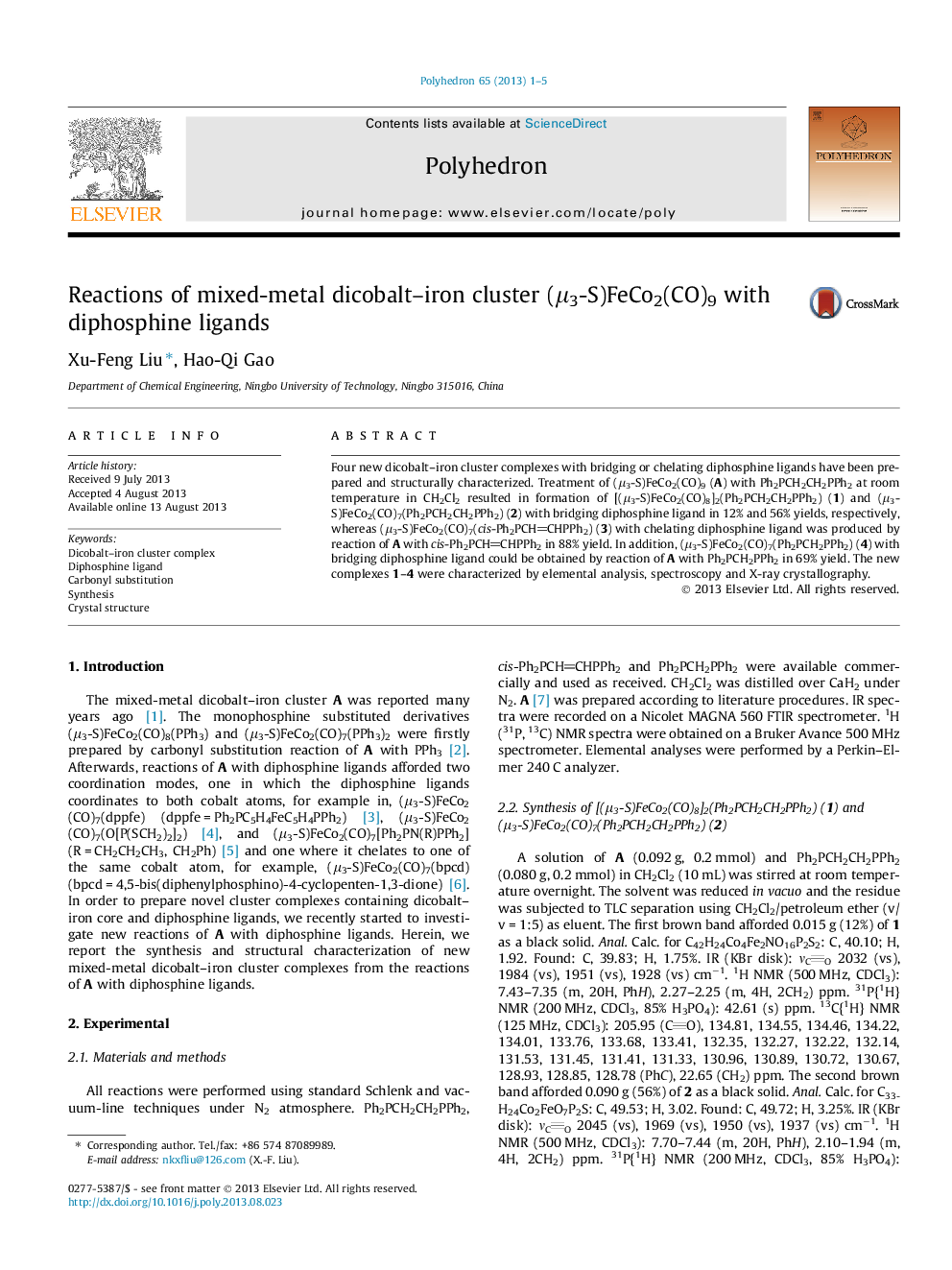| Article ID | Journal | Published Year | Pages | File Type |
|---|---|---|---|---|
| 1336763 | Polyhedron | 2013 | 5 Pages |
Four new dicobalt–iron cluster complexes with bridging or chelating diphosphine ligands have been prepared and structurally characterized. Treatment of (μ3-S)FeCo2(CO)9 (A) with Ph2PCH2CH2PPh2 at room temperature in CH2Cl2 resulted in formation of [(μ3-S)FeCo2(CO)8]2(Ph2PCH2CH2PPh2) (1) and (μ3-S)FeCo2(CO)7(Ph2PCH2CH2PPh2) (2) with bridging diphosphine ligand in 12% and 56% yields, respectively, whereas (μ3-S)FeCo2(CO)7(cis-Ph2PCHCHPPh2) (3) with chelating diphosphine ligand was produced by reaction of A with cis-Ph2PCHCHPPh2 in 88% yield. In addition, (μ3-S)FeCo2(CO)7(Ph2PCH2PPh2) (4) with bridging diphosphine ligand could be obtained by reaction of A with Ph2PCH2PPh2 in 69% yield. The new complexes 1–4 were characterized by elemental analysis, spectroscopy and X-ray crystallography.
Graphical abstractFour mixed-metal dicobalt–iron cluster complexes [(μ3-S)FeCo2(CO)8]2(Ph2PCH2CH2PPh2) (1), (μ3-S)FeCo2(CO)7(Ph2PCH2CH2PPh2) (2), (μ3-S)FeCo2(CO)7(Ph2PCHCHPPh2) (3) and (μ3-S)FeCo2(CO)7(Ph2PCH2PPh2) (4) bearing bridging or chelating diphosphine ligands were prepared by reactions of complex (μ3-S)FeCo2(CO)9 with Ph2PCH2CH2PPh2, cis-Ph2PCHCHPPh2 or Ph2PCH2PPh2. The new complexes were characterized by elemental analysis, spectroscopy, and single-crystal X-ray diffraction analysis.Figure optionsDownload full-size imageDownload as PowerPoint slide
